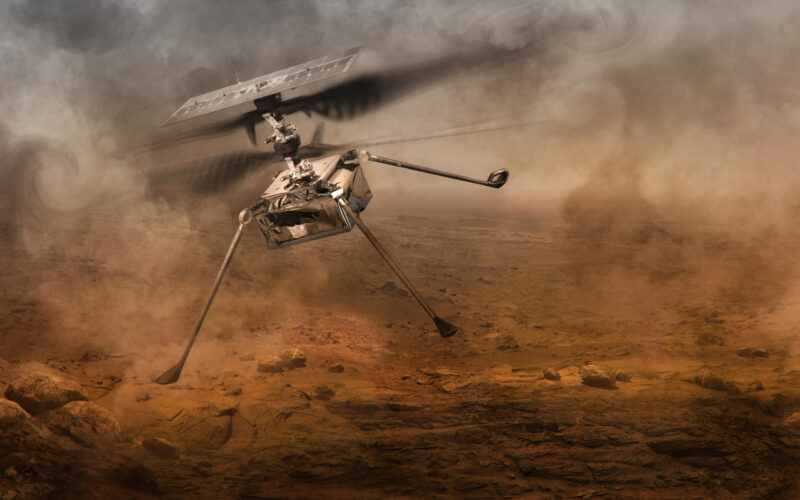Amongst many sophisticated instruments aboard the Perseverance, NASA’s latest Mars rover, there is a curious little box with four legs and four rotor blades attached. It is called Ingenuity, and it is a true-to-life chopper not unlike many flying above Earth’s skies right now.
But the helicopter carries a twist.
No, it is not intended to study the surface and look for signs of ancient microbial life, something Perseverance itself is hoped to find with its super-sophisticated chemical-composition-analyzing instruments. And it is not a test for a system to be used in future manned missions, such as an experimental oxygen production machine within the rover.
In fact, it has a lot more in common with the phone you probably have in your hands, pocket or somewhere nearby, than with the usual marvels of technology NASA sends to Mars. Although this does not mean that Ingenuity lacks technological ingenuity in its design.
The helicopter is a proof of concept, and is intended to test and demonstrate two things at the same time. One of them is, of course, the possibility to fly on Mars – a task that is a little more complicated than it might appear at first sight.

There were numerous proposals to fly an aircraft on Mars before, but nothing more complicated than a simple glider, as the thin atmosphere is not well suited for flight. Ingenuity can change that, showing that flying small drones on the planet is not only possible, but can be beneficial with a little bit of effort.
Which comes to the second point the new Martian helicopter will try to prove: its payload – a couple of cameras, lithium ion battery and several other simple instruments – are not specifically tailored for this mission, they are either off-the-shelf or very similar to those that any drone enthusiast would mount on his DIY project.
And they will make the aircraft fly on another planet, survey the landscape, look for potential landing areas, and recharge in the sun. Ingenuity is bound to prove that consumer-level electronics have reached the level where future missions to Mars can be accompanied by little scout drones made with as little investment as possible.
Of course, to prove that the little helicopter will have to survive its largest challenge yet: a Martian night. As the sun sets beyond the red horizon, temperatures drop to -139 degrees Celsius (-218 °F), well below anything it might experience on Earth. Two-thirds of aircraft’s power is going to be spent just on warming its essential components, but even that won’t be enough.
“If they see enough thermal cycles, they will start breaking. We don’t know when that will happen, but it can’t continue forever,” admitted Bob Balaram, Ingenuity’s chief engineer, in an interview with Astronomy journal. So, as soon as Ingenuity sets its four small legs on Martian ground, it will start dying. Its main challenge then will be to endure for as long as possible, and thus prove the future for its kind exists on the Red Planet.
Whatever the result, as Perseverance lands on Mars on February 18, 2021, and its little load spreads those unproportionally large wings, every helicopter buff on Earth will have a new model to add to his collection – the first rotorcraft that has ever flew on another planet.

